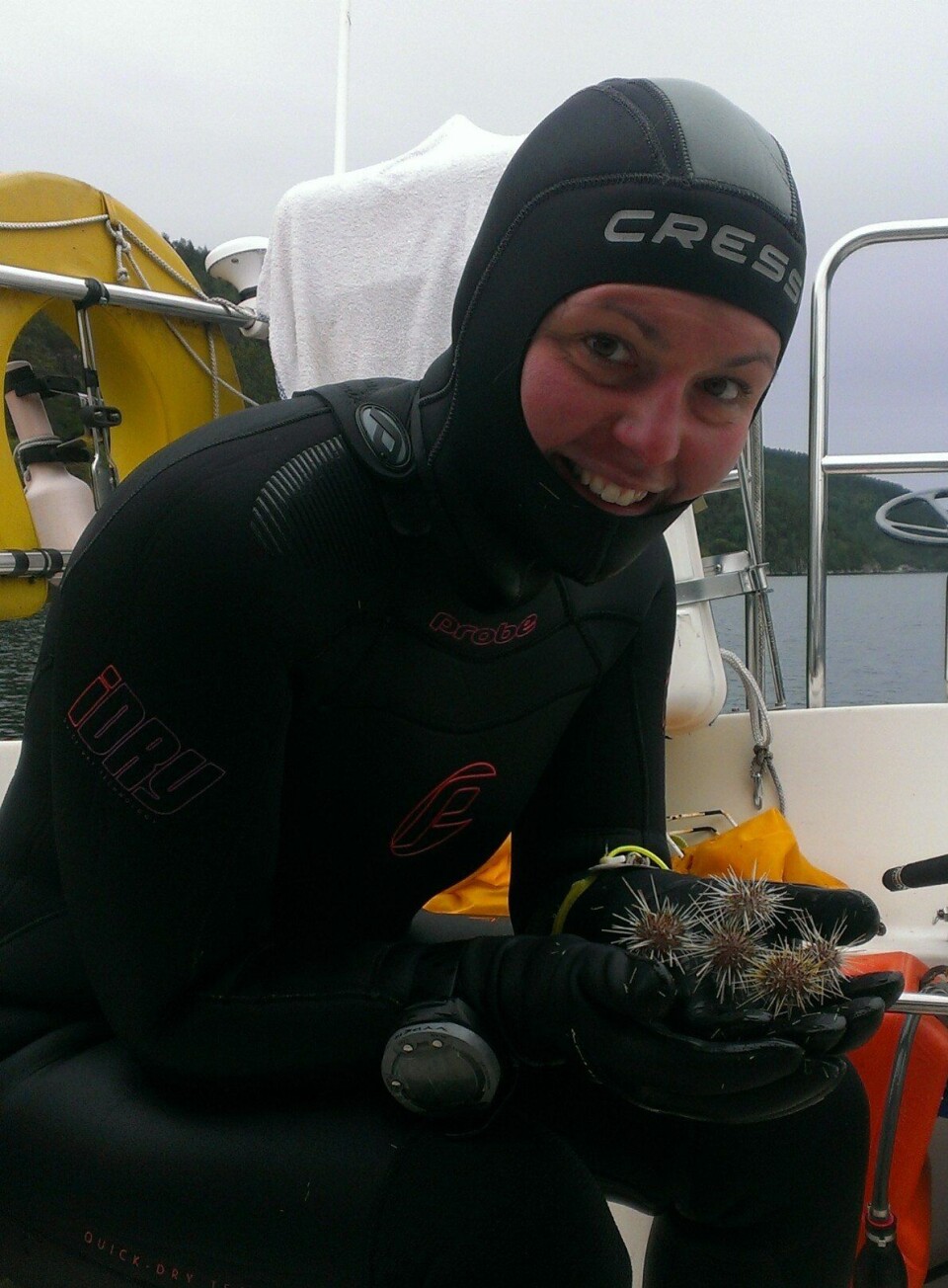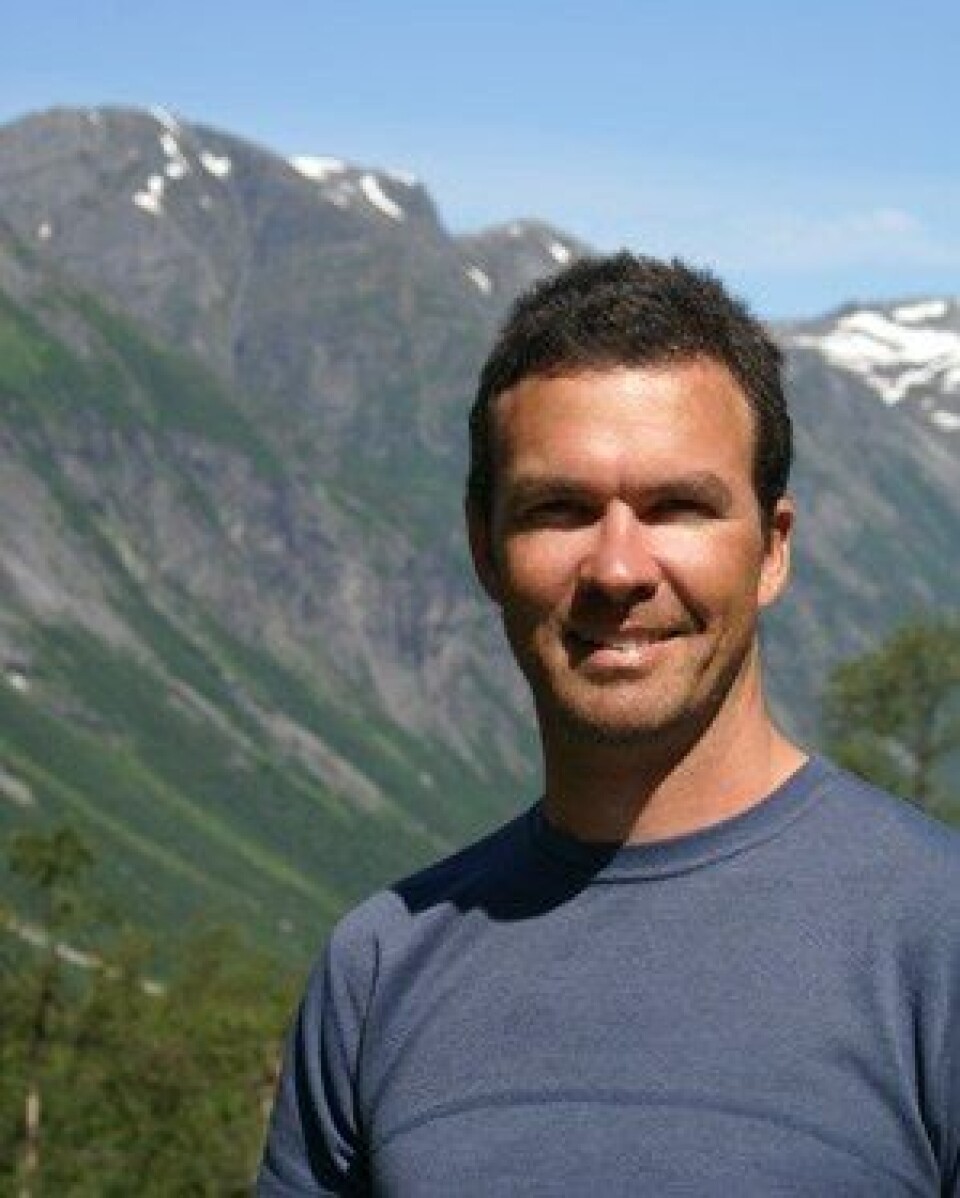
Salmon farm nutrients ‘increase numbers of damaging sea urchins’
The environmental management of waste outflow from salmon farms is largely focused on acute impacts of organic and nitrogenous wastes close to farms. However, energy-rich food in the form of waste feed and faecal material that flow to the environment may have influences over broader areas.

In a Norwegian fjord region with intensive salmon farming, Dr Camille White and Tim Dempster from the University of Melbourne and co-authors from Norway’s Institute of Marine Research tested how salmon farms changed populations of the white urchin Gracilechinus acutus, and if they altered the urchins’ capacity to reproduce.
Ecosystem engineers
Sea urchins are so called “ecosystem engineers” as when found in large numbers they change habitats.
Through feeding, they remove algae such as kelp and form bare rock habitats called “urchin barrens”.
Urchin barrens have far lower animal diversity than kelp forests and many juvenile fish and other species lose their sheltering habitat.
The urchin is an ecosystem engineer in Norwegian fjords, and high densities can form barrens due to feeding on kelp and other algae. The white urchin eats both plant and animal materials and adapts readily to eating waste products from salmon farms.
More abundant around farms
In a paper published this month in Aquaculture Environment Interactions, White and co-authors compared urchin abundance and size at multiple salmon farms with control sites 1.5-2km away from the nearest farm. Urchins formed barrens habitat at salmon farms and were on average 10 times more abundant than at distant sites.
In laboratory experiments, White tested if urchin diets influenced by aquaculture waste affected reproductive outputs compared to natural diets.
Three distinct diets were tested: a current commercial Atlantic salmon feed, a mixed farm and natural feed (equally proportioned commercial and natural feeds combined), and a natural feed (natural materials typically consumed by white urchins).
Despite urchins fed salmon feed and the mixed feed having far bigger gonads than urchins fed with a natural diet, their reproduction was compromised. Fertilisation success, egg diameter and larval length were higher for natural feeds than the mixed and farm feeds. Urchin larval survival after 10 days for the natural feed was more than 30% higher than the farm feed, and 24% higher than the mixed feed.
Farms increase urchin populations
Results from both the fjord population estimates and the laboratory experiment were then combined into a reproductive model to test whether salmon farms had a net positive or negative interaction with the white urchin.
“The reproductive model revealed that the numbers of sea urchins at salmon farms negates the slightly negative effect on reproductive capacity from eating farm wastes,” said White.
Overall, urchin populations at salmon farms produced on average five times more larvae than urchins at control sites of similar size.

Ecosystem level implications
“White urchin barrens are a natural occurrence in Norwegian fjords and existed before the introduction of salmon farms. But our results show salmon farms promote the formation of barrens habitat,” explained Dempster.
With only anecdotal data on urchin populations prior to the commencement of salmon farms in Norwegian fjords in the 1970s, the long-term impact of salmon farms on urchins is hard to assess. However, the well-known effect of urchin aggregations, such as barren formation, suggests that increased production of urchin larvae on a fjord-wide scale has the potential to drive ecosystem-level change.
Wider consequences
“The reproductive output model predicts an increase in the number of urchin larvae each year due to salmon farms. Over time, this means that urchin populations throughout fjord systems, not just in areas close to salmon farms, could increase. Urchin larvae spend up to 50 days in the water column before they settle, so they can disperse far beyond the salmon farm where they were released,” said Dempster.
“We need to further explore the interaction between white urchins and salmon farms to work out the wider consequences for fjord ecosystems and how they can be reduced.”
The full publication is open access and can be downloaded here.
The white sea urchin is found in the eastern Atlantic Ocean, the Mediterranean Sea, the North Sea and the English Channel. According to the UK’s National Biodiversity Atlas, benthic surveys have found white sea urchins off the Argyll coast in 2007 and 2010, and off Shetland in 2009.























































